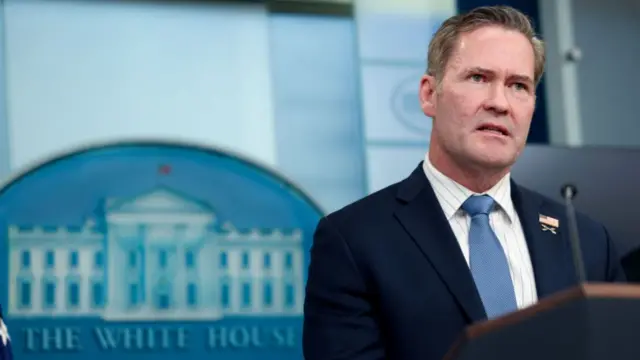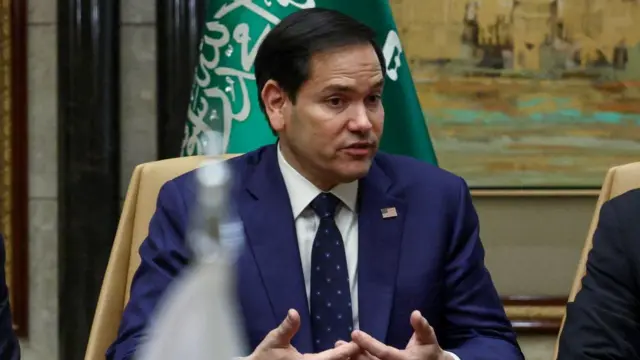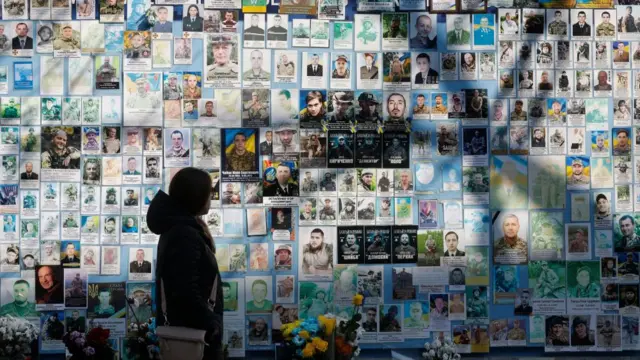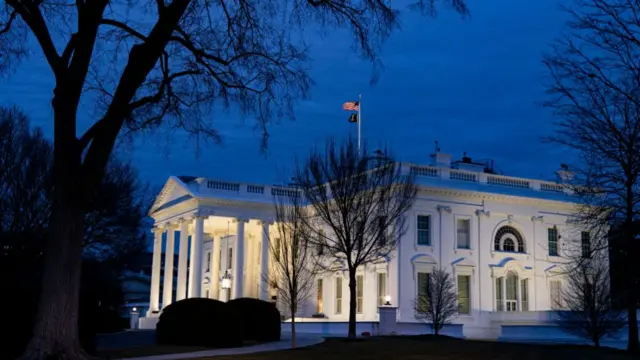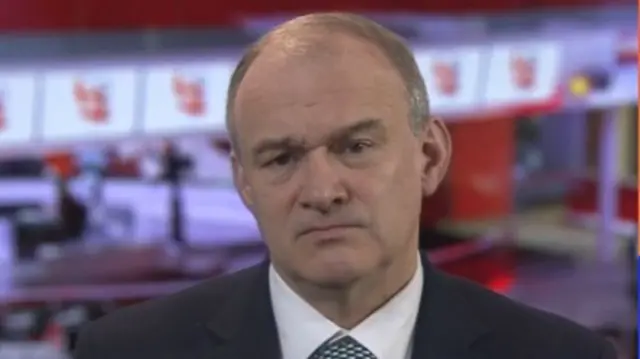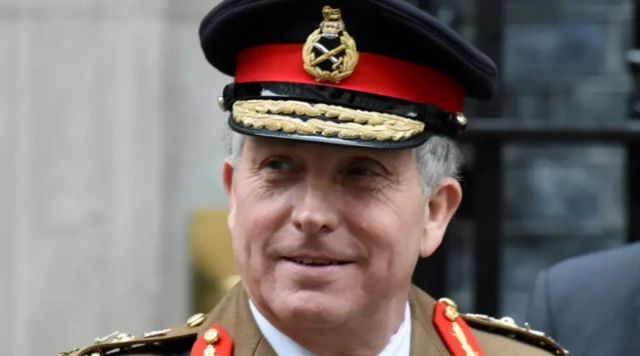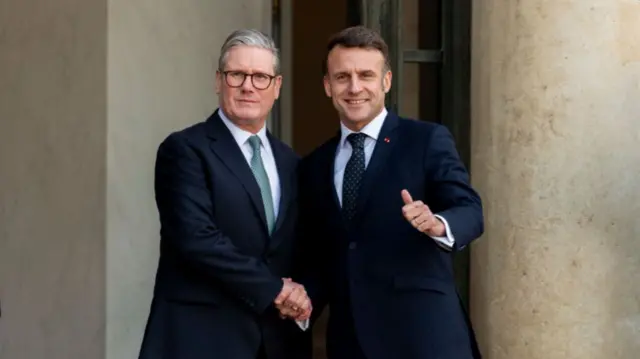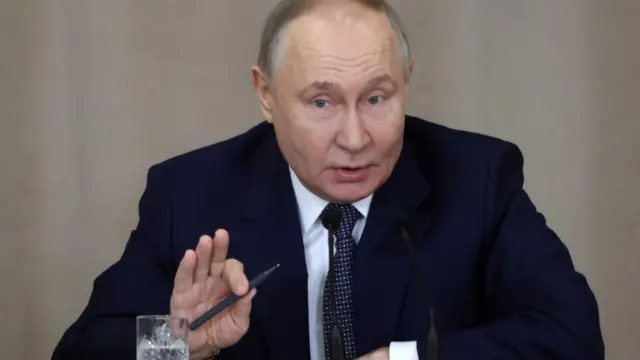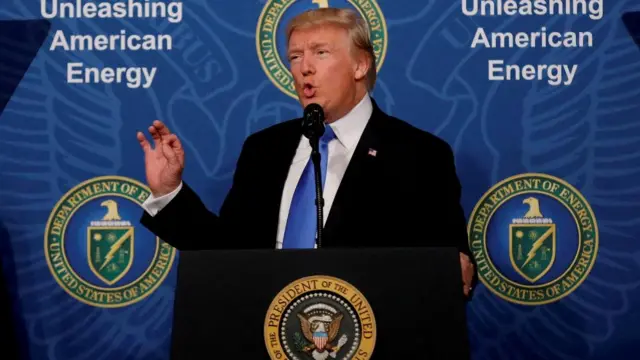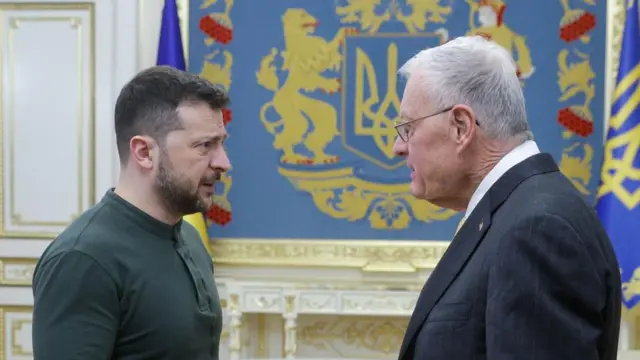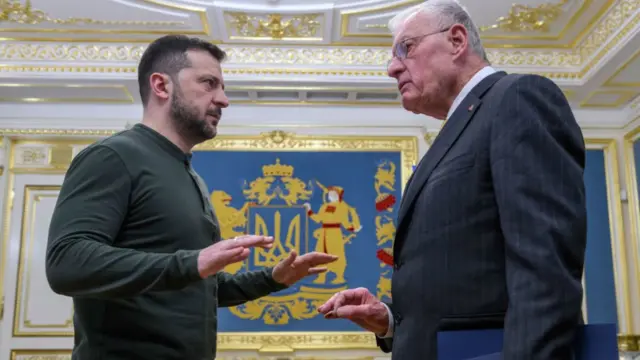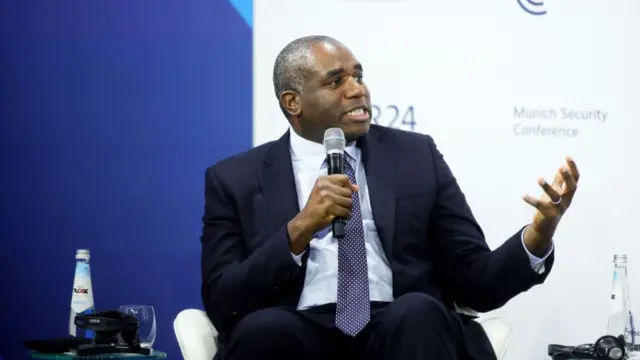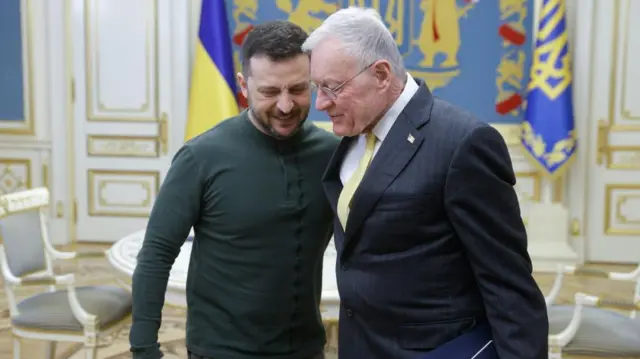Nine days that shook Europe's relationship with the USpublished at 09:34 GMT 21 February
Donald Trump's decision to pursue peace in Ukraine without the direct involvement of Europe, or indeed Kyiv itself, has led to more than a week of political upheaval.
Here's a glance at how it all unfolded, day-by-day:
- 12 February: After a phone call, Trump said he and Putin agreed to begin negotiations to end the Ukraine war. US Defence Secretary Pete Hegseth suggested Kyiv would need to cede territory to Russia in a peace deal
- 13 February: Ukrainian President Volodymyr Zelensky said Ukraine would not agree to any peace deal drawn up without its involvement - European allies backed him
- 14 February: US Vice-President JD Vance used his Munich Security Conference speech to heavily criticise European democracies, almost entirely ignoring Ukraine
- 15 February: At the same conference, Zelensky called for the creation of an “army of Europe” as the continent's "old" relationship with the US was ending. The US announced peace talks in Saudi Arabia between delegations from Washington and Moscow
- 16 February: European leaders scheduled a last-minute meeting in Paris on the war in Ukraine
- 17 February: PM Keir Starmer said any Ukraine peace deal would require a "US backstop" to deter Russia. But he also said Europe would "have to do more" to defend Kyiv
- 18 February: Trump falsely blamed Zelensky for starting the war, which was started by a full-scale Russian invasion in February 2022
- 19 February: Responding to his comments, Zelensky said Trump was living in a “disinformation space” created by Moscow - Trump then called Zelensky a "dictator"
- 20 February: European allies - including Starmer - denounced Trump’s words and backed Zelensky. Trump remained “very frustrated” with Ukraine’s president, but Zelensky said a meeting with a US envoy “restored hope”
